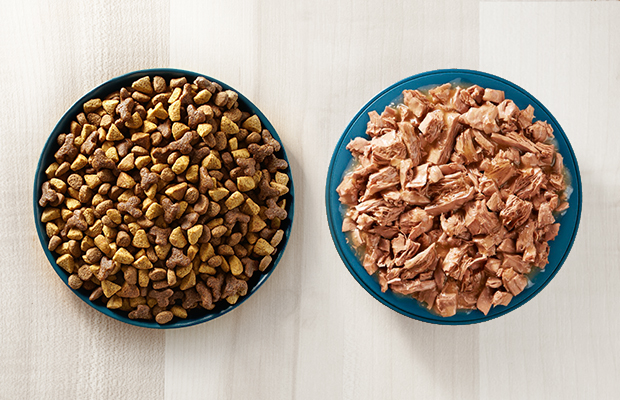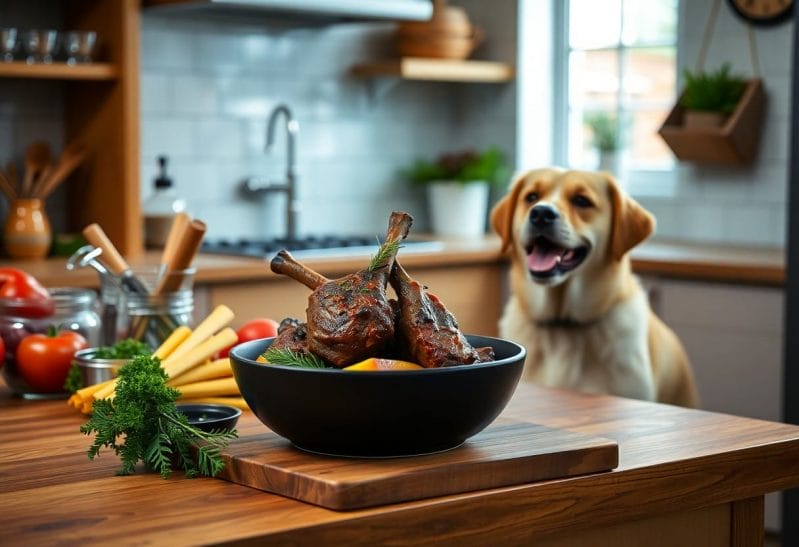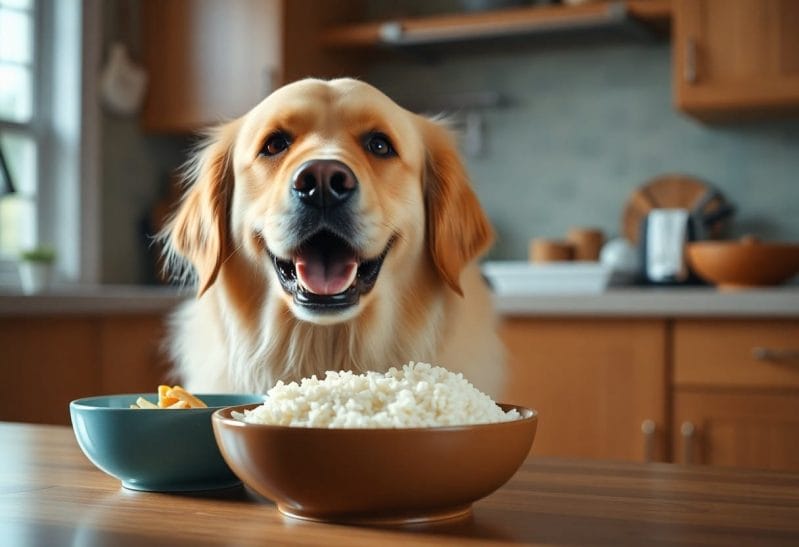Dry cat food may be convenient and cost-effective, but it’s imperative to understand the unique benefits of both wet and dry options to meet your cat’s needs. Each type of food offers different nutrients and hydration levels that can affect your feline friend’s overall health. In this informative post, we’ll break down the pros and cons of wet versus dry cat food, helping you make an informed choice that aligns with your cat’s dietary requirements and preferences. Understanding these differences ensures your beloved pet thrives and stays happy.
Key Takeaways:
- Moisture Content: Wet cat food provides higher moisture levels, which can help keep your cat hydrated and support urinary tract health.
- Nutrition Balance: Dry cat food often contains higher concentrations of calories and nutrients, making it a potential option for cats who need to manage weight or require energy-dense food.
- Dental Health: Dry food can assist in reducing plaque buildup on teeth, promoting better dental health, while wet food can be more palatable for picky eaters.
Nutritional Comparison
Before submerging into the specifics, it’s necessary to understand the fundamental differences in nutrition between wet and dry cat food. Each type has its unique advantages and disadvantages regarding macronutrients, vitamins, and minerals that cater to your cat’s individual health needs.

Macronutrient Breakdown
| Wet Cat Food | Dry Cat Food |
|---|---|
| Higher moisture content (70-80%) | Lower moisture content (10-12%) |
| Higher protein content | Moderate protein content |
| Minimal carbohydrates | Higher carbohydrate content |
| Fewer calories per serving | More concentrated calories |
Vitamin and Mineral Content
Nutritional profiles of wet and dry cat food also differ in their vitamin and mineral content. Wet food generally contains higher levels of natural moisture, which helps provide necessary hydration to your cat while also offering nutrients like taurine, which are crucial for heart health. On the other hand, dry food often serves as a more calorie-dense option and can be fortified with additional vitamins and minerals, potentially making it easier for you to manage your cat’s overall caloric intake.
Nutritional composition varies widely among brands, so it’s vital to read labels to ensure your cat’s food is enriched with necessary nutrients. Dry food is often supplemented with beneficial additives like omega fatty acids and probiotics to support skin health and digestion, while wet food may include higher levels of specific vitamins due to the nature of its ingredients.
Vitamin requirements are crucial for your cat’s health and well-being. Cats specifically require certain vitamins in their diets, including vitamins A, D, E, and several B vitamins. Some wet foods may naturally contain these vitamins due to their meat or fish sources, while dry foods often have synthetic vitamins added during production. It’s important to ensure that whichever type of food you choose provides a balanced array of these necessary vitamins and minerals to support your cat’s dietary needs.
Digestive Health
If you’re considering what type of food is best for your cat, digestive health is a vital aspect to keep in mind. The quality of your cat’s food can significantly impact their gut health, affecting everything from nutrient absorption to overall well-being. An understanding of how wet and dry food influences digestive health can help you make an informed choice for your feline friend.
Wet Food and Gut Health
The higher moisture content in wet cat food can be particularly beneficial for your cat’s digestive system. This added hydration ensures that your cat remains sufficiently hydrated, which is crucial for maintaining a healthy urinary tract and aiding in digestion. Wet food often contains higher protein levels and fewer carbohydrates compared to dry food, allowing for a diet that mimics the natural prey your cat would hunt in the wild. This can lead to improved digestion and nutrient absorption, promoting overall gut health.
Dry Food and Gut Health
Health-wise, dry cat food can offer some advantages as well, particularly when it comes to dental health. The crunchy texture can help reduce plaque build-up and promote good oral hygiene. However, dry food typically has lower moisture content, which might lead to issues like dehydration if your cat doesn’t drink enough water. Moreover, many dry foods contain grain fillers that some cats may find difficult to digest, potentially leading to gastrointestinal discomfort.
It’s imperative to choose high-quality dry food that contains appropriate protein levels and fiber, as these factors can contribute positively to your cat’s digestive health. Additionally, introducing dry food gradually can help prevent upset stomachs, allowing your cat’s gut to adjust to the new diet. Be mindful of your cat’s specific dietary needs and preferences; every cat is unique, and what works for one might not work for another.
Hydration and Water Intake
The Importance of Adequate Hydration
Many cat owners underestimate the critical role that adequate hydration plays in maintaining your cat’s overall health. Cats have a natural tendency to have a low thirst drive, which means they may not always drink enough water on their own. This is particularly true for cats that primarily eat dry food, as these diets contain less moisture compared to wet food. Without sufficient hydration, your cat could be at risk for a variety of health issues, including urinary tract problems, kidney disease, and even constipation.
Hydration is necessary for your cat’s bodily functions, from regulating temperature to aiding digestion and nutrient absorption. When you ensure your cat is drinking enough water, you are also supporting their kidney function, as the kidneys filter out waste and toxins from the bloodstream. Not only does this help your cat to feel better overall, but it also contributes to a longer and healthier life. Understanding your cat’s hydration needs will empower you to choose the best diet and hydration solutions for their specific preferences and lifestyle.
How Wet and Dry Food Affect Water Intake
Food choices can significantly affect your cat’s water consumption. Wet cat food typically contains about 70-80% moisture, which means that when your cat consumes wet food, they’re getting a substantial portion of their required hydration from their meals alone. This can help to supplement your cat’s water intake, making it easier for them to stay hydrated. Conversely, dry food contains only about 10% moisture, requiring your cat to drink more water separately to compensate for the lack of hydration in their diet.
A healthy balance of wet and dry food can provide an effective strategy to keep your cat hydrated. If your cat enjoys both wet and dry food, consider incorporating wet food into their regular feeding routine while ensuring that fresh water is always available. This combination can help balance hydration levels effectively, allowing your cat to enjoy their meals while staying well-hydrated. By being mindful of your cat’s dietary choices, you can contribute significantly to their health and well-being.
Palatability and Appetite
Keep in mind that a cat’s taste preferences can play a significant role in their overall health and nutrition. As you ponder whether to provide wet or dry food, consider how each option appeals to your cat’s palate. Cats are known for being finicky eaters, and the palatability of their food can greatly influence their appetite and willingness to eat. If your cat enjoys their meals, you are more likely to see them maintain a healthy weight and a balanced diet.
The Role of Moisture in Palatability
On the one hand, wet cat food usually has a higher moisture content, typically around 75-80%. This moisture not only helps keep your cat hydrated but can also enhance the overall aroma and flavor of the food, making it more enticing to your feline friend. Cats are instinctively drawn to foods that smell good, and wet food often comes with a robust scent that can stimulate their appetite. This is especially beneficial for picky eaters or those that may have lost interest in their meals.

On the other hand, dry food consists of around 10% moisture, which can make it less appealing to some cats. However, the benefit of dry food is that it can be more convenient to serve and store without worrying about spoilage. Additionally, some dry kibble formulations are designed to provide a crunchy texture that some cats find enjoyable. The challenge, however, is to ensure that your cat is still getting enough hydration, as they might not be as inclined to drink extra water if they eat primarily dry food.
Dry Food and Appetite Stimulation
Any cat owner knows that getting your cat to eat can be a daily challenge, especially if they are fussy or experiencing a decrease in appetite. One of the advantages of dry cat food is that it has a longer shelf life and can be left out for free feeding, allowing your cat to munch whenever they feel hungry. The crunchy texture of dry food can also mimic the sensation of hunting and chewing on prey, which may stimulate your cat’s natural instincts and encourage them to eat more.
Food designed specifically for appetite stimulation can also play a significant role in encouraging a healthy eating routine for your cat. Many brands offer dry foods with enticing flavors or added nutritional boosts that can enhance palatability and entice even the pickiest eaters. By choosing the right balance of moisture and texture in your cat’s diet, you can help ensure that mealtime remains a satisfying experience that supports their overall well-being.
Dental Health
After considering the nutritional aspects of wet and dry cat food, it’s imperative to examine how each type affects your feline friend’s dental health. Oral hygiene plays a crucial role in your cat’s overall well-being, and both wet and dry foods can impact their teeth and gums differently.
The Effect of Wet Food on Dental Health
Dental health in cats is greatly influenced by their diet, and wet food can often be a double-edged sword. While wet food is more palatable and hydrating, it does not offer the same abrasive texture that helps in removing plaque from your cat’s teeth. This can sometimes lead to a higher likelihood of dental issues such as tartar build-up and gum disease if proper dental care is not maintained. It’s important to accompany wet food with regular dental check-ups and cleanings to ensure your cat’s oral health.
Additionally, you may find that cats who primarily eat wet food tend to form less plaque due to the softer nature of their meals. However, this makes it even more critical for you to be proactive about your cat’s dental hygiene, providing dental treats or toys that can aid in cleaning their teeth. By taking a balanced approach to your cat’s diet, you can support their dental health and overall quality of life.
The Effect of Dry Food on Dental Health
Dental health can greatly benefit from a diet that includes dry cat food. The crunchy texture of kibble can help scrape away plaque and tartar during chewing, making it a more effective option for maintaining oral hygiene. This mechanical action can contribute to healthier gums and reduced dental issues over time. However, not all dry foods are created equal, and you should look for those specifically designed to promote dental health.
The abrasive qualities of dry cat food do have their limits, and you shouldn’t rely solely on kibble for your cat’s dental care. It’s imperative to combine this diet with regular dental check-ups and, if necessary, professional cleanings. It’s worth noting that some cats may be prone to neglect their dry food, leading to a less than optimal dental environment. Therefore, keeping a close eye on your cat’s eating habits is important for their dental care.
Lifestyle and Convenience
To determine the best food for your cat, you must consider your lifestyle and how that impacts the feeding routine you adopt. Whether you lead a busy life or have a more flexible schedule can heavily influence your choice between wet and dry cat food. For instance, wet food often requires more immediate serving and can spoil if left out too long, which may not align well with a hectic day-to-day routine. On the other hand, dry food is usually easier to manage. It can be left out for longer periods, allowing your cat to graze, which can suit your busy lifestyle.
Feeding Frequency and Portion Control
Lifestyle choices also play a significant role in how frequently you choose to feed your cat and how you control portions. Wet food typically encourages more scheduled feeding times, as it’s best served fresh and can spoil if left in the bowl. If your schedule allows for more structured feeding, this may be a good option for you. Alternatively, if you prefer to provide more freedom for your cat to eat throughout the day, dry food may be beneficial. You can measure out portions ahead of time, ensuring your feline companion has access to food while also maintaining an appropriate feeding schedule.
Storage and Handling Considerations
Handling your cat’s food requires careful consideration of how it is stored and managed. Wet food often comes in cans or pouches that necessitate refrigeration once opened, while dry food can typically be stored at room temperature in an airtight container. This difference can affect how you plan to manage your pantry and refrigerator space, alongside how much time you dedicate to each feeding type. Additionally, the ease of handling may be a deciding factor; dry food eliminates the mess associated with serving wet food, making it a suitable choice for those who prefer low-maintenance options.

To optimize your cat’s nutrition and manage convenience effectively, it’s imperative to consider not only how you’ll handle and store each type of food but also how it fits into your daily routine. Keeping wet food in the refrigerator may require time for it to reach room temperature before serving, while dry food can be used straight from the container. When you know your schedule and your cat’s feeding habits, you can make a thoughtful choice that benefits both you and your furry friend.
Conclusion
Taking this into account, it’s important for you to weigh the benefits of both wet and dry cat food to determine what might be best suited for your feline friend. Wet food can increase hydration, particularly beneficial for cats who may not drink enough water. It also tends to be more palatable and rich in protein, which aligns with a cat’s natural dietary preferences. On the other hand, dry food offers convenience, cost-effectiveness, and ease of storage while helping to reduce plaque buildup on your cat’s teeth. Understanding these differences can guide you in making an informed decision that caters to your cat’s specific health needs and behavioral tendencies.
Ultimately, consulting with your veterinarian is key, as they can provide personalized recommendations based on your cat’s age, weight, health, and lifestyle. Whether you decide to offer a mix of both wet and dry food or choose one over the other, the goal is always to support your cat’s overall well-being. Remember that each cat is unique, and what works for one may not work for another. By considering these factors, you empower yourself to create the best possible diet for your beloved pet.
Q: What are the main nutritional differences between wet and dry cat food?
A: Wet and dry cat foods differ significantly in their moisture content and nutritional composition. Wet cat food usually contains around 70-80% moisture, which can be beneficial for hydration and is often easier for cats to consume, especially for those with dental issues or who prefer softer textures. Dry food, on the other hand, generally has only about 10% moisture and is typically formulated with a higher carbohydrate concentration. While both types can provide balanced nutrition if they meet AAFCO guidelines, the choice may depend on your cat’s specific health needs, preferences, and overall hydration levels.
Q: How do wet and dry cat foods impact my cat’s dental health?
A: Dental health can be influenced by the type of cat food you choose. Dry cat food is often marketed as beneficial for dental health because the crunchy kibble may help reduce tartar buildup through mechanical abrasion during chewing. However, some studies suggest that the impact of dry food on dental health might not be significant enough to fully prevent dental disease. Wet cat food, while softer, does not provide the same mechanical cleaning benefits; however, it can be beneficial for hydration and preventing urinary tract issues, which are concerns that may also impact a cat’s overall health.
Q: Which type of cat food is better for cats with specific health issues, such as obesity or kidney disease?
A: The suitability of wet versus dry cat food can vary based on specific health concerns. For cats with obesity, wet food is often recommended because it typically contains fewer calories per serving than dry food, which allows for larger portion sizes with lower caloric intake, helping cats feel fuller. For cats with kidney disease, wet food is usually preferred due to its high moisture content, aiding hydration and potentially alleviating some symptoms associated with the condition. However, it’s crucial to consult your veterinarian before making dietary changes, as they can provide guidance tailored to your cat’s individual health needs.








